NFL Nation reporters assess every first-round pick:

1. Cleveland Browns
Baker Mayfield, QB, Oklahoma
Why they did it: The Browns needed to use this pick on a quarterback, and the one they decided fits best is Mayfield. He’s small (6 feet, 5/8 inches), but he’s competitive and accurate. He plays with swagger, perhaps to the extreme, but he also completed 69.8 percent of his passes during his final season. He left Oklahoma as the all-time Big 12 leader in yards per attempt and consecutive games with a touchdown pass. He is the guy whom general manager John Dorsey and the Browns are committing their future to.
Biggest question: Mayfield bristles at comparisons to Johnny Manziel, and he and Manziel are different players on the field. But like Manziel, Mayfield is not ideal NFL quarterback size, and he has had off-the-field issues. The Browns must love his ability, because they have shrugged off an arrest and actions on the field that some teams would not accept. Teams generally don’t like risks with the first overall pick; this pick involves a fair amount of risk. -- Pat McManamon

2. New York Giants
Saquon Barkley, RB, Penn State
Why they did it: The Giants were in love with Barkley. He was the top prospect on their draft board from the get-go. He fills a major need, as they haven’t had a Pro Bowl-caliber running back since Tiki Barber. The Giants also aren’t as concerned about their future at quarterback as everybody else. They feel Eli Manning has some “years” left, as new coach Pat Shurmur said in February at the NFL scouting combine, and Davis Webb has potential.
Biggest question: Is it worth taking a running back with the No. 2 overall pick? This is more about positional value than uncertainty with Barkley, who is a pristine prospect with impressive skills. He is 233 pounds, runs the 40-yard dash in 4.4 seconds, has tremendous balance and catches the ball well out of the backfield. But Barkley instantly becomes among the highest-paid players at his position and needs to perform at a Pro Bowl-level immediately to be worth the investment. This also happens to be an extremely deep position in this year’s draft; the Giants could have taken a quality running back in the second or third round. -- Jordan Raanan

3. New York Jets
Sam Darnold, QB, USC
Why they did it: After decades of draft misses and veteran Band-Aids, it was time once again to make a bold move to end the maddening pattern of quarterback mediocrity. When Darnold unexpectedly fell to them at No. 3, the Jets pounced on the most complete quarterback prospect in the draft. His innate skill as a passer, combined with his mobility, provides hope for an offense that hasn’t cracked the top 10 in yards since Brett Favre’s one-year rental in 2008.
Biggest question: Are they getting the 2016 Darnold or the 2017 Darnold? In the span of a year, he went from The Next Great Quarterback to a turnover machine. He has some bad habits that need to be addressed, and that will take time, raising questions about how long it’ll take to get him ready to play. His arrival means the end of the Christian Hackenberg era, which never started. Hackenberg and Bryce Petty are likely goners, with incumbent Josh McCown and Teddy Bridgewater set to compete for the starting job. It could be a redshirt year for Darnold. -- Rich Cimini

4. Cleveland Browns
Denzel Ward, CB, Ohio State
Why they did it: This pick screams need over best player available, as the Browns have significant need at corner. Ward had better be good, because in selecting him, the Browns passed up on Minkah Fitzpatrick of Alabama and defensive end Bradley Chubb of NC State, both considered among the draft’s premier players. Ward was considered a good player, but the value of his selection at fourth overall will be questioned.
Biggest question: Like first overall pick Baker Mayfield, it’s size. He’s 5-foot-11 and 183 pounds, which is not a big frame for the position and the press coverage he’ll be asked to play. In bypassing Fitzpatrick and Chubb, though, the Browns have placed a lot of attention and pressure on Ward, who will have to live up to his selection at a spot few expected him to go. -- Pat McManamon

5. Denver Broncos
Bradley Chubb, DE, North Carolina State
Why they did it: Are you kidding? Chubb is the best edge player on the board, and the Broncos now have a potential walk-in starter to put into a pass rush that would include Von Miller, Shane Ray and Derek Wolfe. Chubb had 26 tackles for loss last season, and he is a high-effort player who should transition quickly to the NFL.
Biggest question: There are few riddles about Chubb’s game, but the Broncos will have to fit him into their 3-4 scheme. Chubb, with a 4.65-second 40-yard dash, doesn’t have the elite speed at outside linebacker and is not as big as some defensive ends. But this is a proficient pass-rusher who puts the Broncos' D back in the fast lane. -- Jeff Legwold
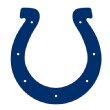
6. Indianapolis Colts
Quenton Nelson, G, Notre Dame
Why they did it: Andrew Luck. The Colts have spent the first six years of Luck’s NFL career trying to put an offensive line around their franchise quarterback. Luck has missed 28 games over the past three seasons because of injuries; he has been sacked 156 times in his career. The Colts gave up an NFL-high 56 sacks last season. Now the foundation of the offensive line is starting to come together. Nelson will join an offensive line that features left tackle Anthony Castonzo and center Ryan Kelly.
Biggest question: None. Colts general manager Chris Ballard called Nelson the best offensive lineman in the draft. Nelson will be in position to start right away at guard. -- Mike Wells

7. Buffalo Bills (from Tampa Bay)
Josh Allen, QB, Wyoming
Why they did it: As general manager Brandon Beane said in his pre-draft news conference, it is the job of a GM to find a franchise quarterback -- and the Bills hope they have in Allen. He is the highest-selected quarterback in franchise history, surpassing Jim Kelly, who was taken at No. 14 in 1983. Allen is a project who likely will compete with AJ McCarron for the starting job in training camp.
Biggest question: The Bills were patient and waited for Allen to slide to No. 7 when he was projected in some cases to be drafted higher, and they kept their No. 22 overall pick in their trade with Tampa Bay. But with Josh Rosen still on the board, picking Allen -- considered much more of a wild card -- will be a move that could decide Beane’s tenure as GM. -- Mike Rodak

8. Chicago Bears
Roquan Smith, LB, Georgia
Why they did it: Smith is the perfect pick for Chicago. The Bears need help at inside linebacker with the offseason departure of veteran Jerrell Freeman, and Danny Trevathan -- while a solid player when healthy -- missed 11 games over the past two seasons. Smith is the best linebacker in the draft class. He possesses tremendous sideline-to-sideline speed, can run with tight ends, is a big hitter and is a leader inside the locker room. Bears defensive coordinator Vic Fangio, who coached Patrick Willis in San Francisco, has to be thrilled to add such an impact player.
Biggest question: Some have questioned Smith’s size (6-1 and 236 pounds at the NFL combine), but both Willis and Trevathan played at 6-1 and 240 pounds. Smith is talented enough to fit in any defense. The only question -- as with many of Ryan Pace’s draft picks -- is health. The last Georgia player the Bears took in the top 10, OLB Leonard Floyd, has battled injuries throughout his short NFL career. Smith did suffer a shoulder injury in college. -- Jeff Dickerson
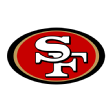
9. San Francisco 49ers
Mike McGlinchey, OT, Notre Dame
Why they did it: This pick is as much about 2019 and beyond as it is about the immediate future. Right tackle Trent Brown is coming off a shoulder injury and will be a free agent after the 2018 season, and left tackle Joe Staley will be 34 in August. Protecting quarterback Jimmy Garoppolo is a priority, and the Niners landed the tackle they believe is the best in this draft. McGlinchey also could contribute at guard right away if Brown doesn’t return to full strength or is traded.
Biggest question: Can McGlinchey succeed as a left tackle? Some evaluators believe he’s best suited on the right side because he’s not a dominant athlete. But it’s hard to imagine the Niners would have selected him here if they didn’t envision him eventually replacing Staley on the left side. Coach Kyle Shanahan’s system will undoubtedly put him to the test. -- Nick Wagoner

10. Arizona Cardinals (from Oakland)
Josh Rosen, QB, UCLA
Why they did it: The Cardinals needed their quarterback of the future -- plain and simple. There are too many questions surrounding Sam Bradford’s health, and Mike Glennon isn’t the franchise’s long-term answer. As the first round unfolded, Arizona knew it needed to move up, and that’s what it did -- trading its first-round selection, one of its third-round picks and its fifth-round pick to the Oakland Raiders for the 10th overall pick -- thus landing a young quarterback who can be the long-term solution.
Biggest question: Will Rosen, who is known to be outspoken and arrogant, be able to be patient and wait for an opportunity to start? And once he gets his chance to start, how good can he be? -- Josh Weinfuss

11. Miami Dolphins
Minkah Fitzpatrick, DB, Alabama
Why they did it: The Dolphins desperately needed help in pass defense, especially against tight ends. No team allowed more receptions by tight ends than the Dolphins did last season (94), and Fitzpatrick can only help in the effort toward improving that stat.
Biggest question: The Dolphins allowed themselves to be passed over for UCLA quarterback Josh Rosen, who went one spot ahead to the Arizona Cardinals. How will that decision look in a couple of years if Ryan Tannehill can't re-establish himself as the Dolphins' starter? -- Kevin Seifert

12. Tampa Bay Buccaneers (from Buffalo)
Vita Vea, DT, Washington
Why they did it: The Bucs had just 22 sacks last season, dead last in the NFL. Vea is a total monster at 6-4 and 347 pounds; he can easily take on double-teams and plow his way into the backfield. Pair him with six-time Pro Bowl defensive tackle Gerald McCoy, and suddenly a Bucs defense that allowed a league-high 6 yards per play and 378 yards per game last season -- both the most in the league -- has become a lot better.
Biggest question: This was not a need pick but a best-available pick, because the Bucs invested heavily already this offseason by signing defensive tackles Beau Allen and Mitch Unrein, and they traded for defensive end Jason Pierre-Paul. Vea had 9.5 sacks in three seasons. The real question now is when will the Bucs address a secondary that surrendered 256 yards per game over the past two years? Especially when they had their shot at Florida State safety Derwin James, who has drawn comparisons to Eric Berry and Sean Taylor. -- Jenna Laine

13. Washington Redskins
Da'Ron Payne, DT, Alabama
Why they did it: The Redskins ranked last in the NFL in rushing yards per game and needed more depth up front. With Barkley selected by the Giants and Ezekiel Elliott in Dallas, the Redskins need to make sure they’re strong up front or they’ll get handled once more in the run game. They do have Jonathan Allen, Payne’s former Alabama teammate. When Allen was hurt last season and missed the last 11 games, the Redskins’ run defense suffered. Now, Washington should have enough depth to withstand injuries.
Biggest question: Can he impact the pass game? Several scouts and coaches around the league aren’t sold that he can be a three-down player, and he doesn’t collapse the pocket. The Redskins also passed on two players who, perhaps, are more talented in safety Derwin James and linebacker Tremaine Edmunds. If Payne provides push inside, they won’t regret the pick.-- John Keim
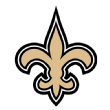
14. New Orleans Saints (from Packers)
Marcus Davenport, DE, Texas-San Antonio
Why they did it: An edge rusher was a no-brainer for the Saints, especially a big one like the 6-6, 264-pound Davenport, who can be a true 4-3 defensive end. I’ve had edge rusher ranked as New Orleans’ No. 1 need for the past two years, and it’s the kind of impact position that can push a contender over the top.
Biggest question: The price tag is obviously the question mark -- the Saints dropped one of the biggest bombshells on this year’s draft by trading two first-rounders and a fifth-rounder to move up from No. 27 to No. 14. Also, Davenport is considered a bit of a raw developmental prospect coming from the University of Texas-San Antonio, though he was projected to go around this spot in the draft. -- Mike Triplett

15. Oakland Raiders
Kolton Miller, OT, UCLA
Why they did it: As dominant as the Raiders' offensive line has shown it can be, there is a weakness at right tackle, and Pro Bowl left tackle Donald Penn will turn 35 on Friday. Miller is a fourth-year junior who was the Bruins’ starter at right tackle in 2016, before moving to left tackle last season to protect Josh Rosen’s blind side. Tom Cable, the former Raiders coach who is returning to Oakland under Jon Gruden as the offensive line coach, is absolutely digging this pick -- even if Miller is more of a project than a Day 1 starter -- especially with division rival Denver adding Bradley Chubb.
Biggest question: The Raiders signed Breno Giacomini in free agency a year after drafting David Sharpe and two years after drafting Vadal Alexander. So who goes? -- Paul Gutierrez

16. Buffalo Bills (from Ravens)
Tremaine Edmunds, LB, Virginia Tech
Why they did it: Edmunds, who was considered by some to be a top-10 talent in the draft, was slipping down the board. Buffalo traded one of its two third-round picks (No. 65) and the No. 22 pick to move up six spots to No. 16, where it ended Edmunds’ fall. It also acquired a fifth-round pick (No. 154) from Baltimore. Edmunds is a long, athletic linebacker who can play several spots. He projects to start somewhere in the Bills’ 4-3, depending on how they shuffle players around.
Biggest question: The Bills began the day with six picks in the first three rounds, the product of several trades since last year that gave them some of the most draft capital in the league. They used almost all of that capital to trade up for Edmunds and quarterback Josh Allen. Barring further trades, that leaves Buffalo with an 80-selection gap until their next pick, No. 96 in the third round. That is a big void for a team that could use help at several positions. -- Mike Rodak

17. Los Angeles Chargers
Derwin James, S, Florida State
Why they did it: The Chargers lost safety Tre Boston in free agency, then had one of the best athletes in the draft slip to No. 17 in James. The Bolts have been looking for a long-term answer at safety since Eric Weddle left at the end of the 2015 season, and they appear to have their answer.
Biggest question: James will be tabbed to play a Kam Chancellor-type role in defensive coordinator Gus Bradley’s scheme. However, Jahleel Addae already fills that position for the Chargers at strong safety, so it will be interesting to see if James can play some free safety. James worked out with one of Bradley’s former players, Seattle Seahawks safety Earl Thomas, during the lead-up to the draft. -- Eric D. Williams
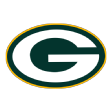
18. Green Bay Packers (from Seattle)
Jaire Alexander, CB, Louisville
Why they did it: They needed big-time help in the secondary. Yes, they signed veterans Tramon Williams and Davon House in free agency. But after trading 2015 first-round pick Damarious Randall to the Browns last month, they had a void in the secondary, even after they drafted cornerback Kevin King with their top overall pick last year (No. 33 overall).
Biggest question: Is Alexander tall enough? He measured just 5-10¼ at the scouting combine. Pro Football Hall of Fame general manager Ron Wolf had a rule that he wouldn’t take a DB under 5-11 after he made the mistake of taking Terrell Buckley (5-10) with his very first pick as the Packers GM in 1992. New GM Brian Gutekunst, who was hired by Wolf, wasn’t scared away by Alexander’s height after trading back from No. 14 overall, where he had the chance to take Marcus Davenport, Tremaine Edmunds or Derwin James. -- Rob Demovsky
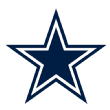
19. Dallas Cowboys
Leighton Vander Esch, LB, Boise State
Why they did it: The Cowboys lost Anthony Hitchens in free agency to Kansas City. Sean Lee has an injury history. Jaylon Smith is a mystery with his health. Vander Esch can play all three linebacker spots, but he should get a look first at middle linebacker.
Biggest question: The Cowboys used a second-round pick on Smith in 2016, knowing he would need a redshirt year. He played in every game a year ago in an incredible comeback from a serious knee injury. The Cowboys have said they expect him to take a big jump in 2018, but is a position switch in the cards for Smith? -- Todd Archer

20. Detroit Lions
Frank Ragnow, C, Arkansas
Why they did it: The Lions wanted to protect Matthew Stafford, which led to the offensive line and center Frank Ragnow from Arkansas. That’ll mean Graham Glasgow is going to be at guard, but this is a stunning pick from Bob Quinn.
Biggest question: Sure, the Lions needed interior offensive line help, but defense has been the bigger issue. This one is a very surprising pick, considering Harold Landry, Taven Bryan and Rashaan Evans were on the board. -- Michael Rothstein

21. Cincinnati Bengals
Billy Price, C, Ohio State
Why they did it: The Bengals don't often take interior lineman in the first round, but Price has been one of their top players for months thanks to the departure of Russell Bodine. The Bengals can fill a hole with a player who can get into the starting lineup right away. Retooling the offensive line has been one of the top priorities this year, and the Bengals now have a new center in Price in addition to new left tackle Cordy Glenn. If Price is healthy, expect him to be starting on Day 1. "He has all the intangibles," Bengals coach Marvin Lewis said.
Biggest question: Price's injury status is the only obvious downside after he partially tore his pectoral muscle at the NFL scouting combine. That could throw a wrench in the plan to get him involved right away, but Lewis said Price passed all of the medical evaluations. Price also has shown his durability in the past by starting a record 55 games at Ohio State. Price's doctor also sent a note to teams that indicated Price is on track for training camp. “We're not allowed padded practices until training camp, so he won't miss one of those," Bengals offensive coordinator Bill Lazor said. -- Katherine Terrell
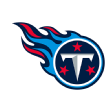
22. Tennessee Titans
Rashaan Evans, LB, Alabama
Why they did it: Evans is potential three-down linebacker who fills one of Tennessee’s biggest needs at inside linebacker. He looks like the modern NFL linebacker with the versatility to cover, stuff the run and blitz. He should be a Day 1 starter and a tone-setter on the Titans’ defense.
Biggest question: At 6-3 and 234 pounds, Evans is on the smaller side, and he has a little bit of a durability concern. He didn’t run a 40-yard dash pre-draft, so there was a question about his speed. He also played on an Alabama defense with a ton of talent in front of him, so that helped him make a few more plays. -- Cameron Wolfe

23. New England Patriots
Isaiah Wynn, G, Georgia
Why they did it: The Patriots have a void at left tackle after Nate Solder signed with the Giants in free agency, and Wynn could be a big part of the team’s plans in filling it. He has experience at both left tackle (21 games) and left guard (19 games) in college. At 6-2 6/8 and 313 pounds, some have projected him to guard in the NFL, but the Patriots might be looking at him more as a tackle when factoring in his arm length (33 3/8 inches) and wingspan (78 7/8 inches). The Patriots might have been locked on Wynn all along, but there was some intrigue before the pick at No. 23 when the Titans traded up to No. 22 to select LB Rashaan Evans, who was a pre-draft visitor to the Patriots and could have filled the team’s other major need.
Biggest question: Is he too short to be the answer at left tackle? The Patriots probably figure there’s little downside to seeing if it’s a fit, because if it doesn’t pan out, he projects as a plug-and-play starter at guard. But if that’s the way it unfolds, the question would be if the Patriots got good value in the first round at that position. -- Mike Reiss

24. Carolina Panthers
D.J. Moore, WR, Maryland
Why they did it: The Panthers needed a playmaker with speed (a 4.43 40) who can create separation. They got one in Moore, who reminds a lot of former Carolina wide receiver Steve Smith in terms of his attitude and physical style. He’s built more like a linebacker at 6 feet and 210 pounds, and he plays like one, too.
Biggest question: Analysts say he needs work on his routes, but otherwise, he’s the complete package. The Panthers thought enough of him to bypass Alabama’s Calvin Ridley, considered by many the top receiver in the draft and an excellent route runner. Speed might have been the difference. Ridley is more of a possession receiver, and the Panthers have one in Devin Funchess. -- David Newton

25. Baltimore Ravens
Hayden Hurst, TE, South Carolina
Why they did it: The Ravens’ biggest need was a pass-catching tight end, and Baltimore was able to get its highest drafted player at that position despite trading back twice. Hurst is considered the best all-around tight end in this draft class. He has been compared to former Steelers tight end Heath Miller. In Ozzie Newsome’s final draft as general manager, it’s fitting that the Pro Football Hall of Fame tight end addresses that position with his first-round pick.
Biggest question: Was it worth passing on Derwin James at No. 16? The Ravens traded back twice even though a top-10 talent such as James was on the board. Baltimore dropped back a total of nine spots from No. 16 to No. 25, getting additional picks in the third and fourth rounds. The Ravens gave up picks in the fifth and sixth rounds. Their preference entering this draft was to trade back, and they filled a major void. But it would’ve been awfully tempting to select James, one of the more versatile players in this draft. -- Jamison Hensley

26. Atlanta Falcons
Calvin Ridley, WR, Alabama
Why they did it: The Falcons needed a complement to Julio Jones, another former Alabama receiver. The 6-1, 189-pound Ridley is a playmaker with good speed. When defenses focus their attention on Jones, Ridley could be the guy on the opposite side who makes plays with Mohamed Sanu strong-arming folks in the slot. Atlanta, which led the league in scoring at 33.8 points per game two seasons ago, suffered a significant drop-off last season. Ridley can help that offense get back on track. The Falcons also needed another target, what with speedy Taylor Gabriel going to Chicago in free agency.
Biggest question: Ridley reportedly had 20 drops over three seasons, and the Falcons struggled with drops a year ago, so they hope that doesn't become an issue. Some folks have questioned Ridley's toughness. One AFC executive told ESPN, “Similar style to Amari Cooper but not as strong or explosive. Solid first-rounder." -- Vaughn McClure

27. Seattle Seahawks (from Green Bay)
Rashaad Penny, RB, San Diego State
Why they did it: Seattle is serious about fixing its broken running game. Russell Wilson led the team in rushing last season, and the Seahawks had all of one rushing touchdown by a running back, which goes to show how bad things were. Chris Carson and Mike Davis are both promising players, but they’ve each struggled with injuries, and neither has rushed for more than 250 yards in a season.
Biggest question: Drafting a running back at this spot is understandable, but did the Seahawks pick the right one? LSU’s Derrius Guice was still available, as were Georgia’s Nick Chubb and Sony Michel. All three were widely projected to be taken ahead of Penny, for whatever that’s worth. -- Brady Henderson

28. Pittsburgh Steelers
Terrell Edmunds, S, Virginia Tech
Why they did it: The Steelers needed to upgrade a secondary that had far too many breakdowns late last season, and they coveted Edmunds’ versatility. He can play free safety, strong safety and linebacker in sub-packages. He’s physical and runs a 4.47-second 40. He was a leader for a Virginia Tech defense that featured his 19-year-old brother, Tremaine, who was drafted 16th overall by Buffalo. “He checks all the boxes,” Steelers coach Mike Tomlin said.
Biggest question: How do the Steelers replenish two key positions at inside linebacker and wide receiver? The losses of Martavis Bryant via a trade to Oakland and Ryan Shazier to injury leave the Steelers with two massive holes entering Day 2. General manager Kevin Colbert doesn’t seem worried. “There are good players available,” he said. There are questions about whether Edmunds was a first-round prospect, but the Steelers say he was the top player on their board. -- Jeremy Fowler
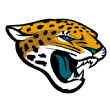
29. Jacksonville Jaguars
Taven Bryan, DT, Florida
Why they did it: It’s a strange pick for the Jaguars, because they are so talented across the defensive front. Malik Jackson made the Pro Bowl last season, and Marcell Dareus is a former Pro Bowler, as well, but both players are scheduled to earn big salaries in 2019 ($21.3 million combined). None of it is guaranteed, though, so adding Bryan will allow the Jaguars to move on from one or both and have a talented replacement ready.
Biggest question: Bryan is more potential than production. He had 5.5 sacks and 67 tackles in three seasons at Florida, including 4.0 sacks and 40 tackles in 2017. He had started only three games in his first two seasons. The Jaguars need more help along the offensive line and at tight end, so this is a luxury pick. -- Michael DiRocco

30. Minnesota Vikings
Mike Hughes, CB, Central Florida
Why they did it: The Vikings have an affinity for drafting cornerbacks early in the draft, and Hughes becomes the fifth defensive back selected in the first or second round since 2012. Hughes had four interceptions in 2017, tied for fourth in the AAC and tied for 29th in FBS. He also had with a heavy role in the return game, averaging 31.8 yards per kickoff return, including and two for touchdowns last year. The 5-10 corner is a tough, physical player with solid ball skills and a quick twitch that allows him to adjust and cover routes.
Biggest question: Hughes doesn’t have a ton of experience in coverage and is far more of a project for Minnesota to take on as a first-round pick. However, that’s the case with a number of corners who were still available when Hughes was picked, including Iowa’s Josh Jackson and LSU’s Donte Jackson. It’s likely that Hughes will be a developmental prospect for a while in Minnesota’s defense as the coaches figure out where to play him. -- Courtney Cronin

31. New England Patriots
Sony Michel, RB, Georgia
Why they did it: The team lost Dion Lewis in free agency, which created a void in explosive playmaking ability. Michel, who totaled 591 carries for 3,638 yards with 33 touchdowns, could add that dynamic to the team’s attack alongside Rex Burkhead, James White, Mike Gillislee, Jeremy Hill and Brandon Bolden. One of the things that likely appealed to the Patriots was Michel’s ability to be a dual threat, as he practiced with receivers at times, and that he was a two-time team captain who earned the respect of many at Georgia. The Patriots hadn’t selected a running back in the draft since White in 2014.
Biggest question: Durability and ball security. As Adam Schefter reported, some teams had questions about Michel’s injury history from a long-term perspective, specifically with his knee. The 5-10, 214-pound Michel also has 12 career fumbles. Coach Bill Belichick’s history with players who struggle with ball security is well-documented, as he often says that those who carry the football carry the fate of the entire team in their hands. -- Mike Reiss

32. Baltimore Ravens
Lamar Jackson, QB, Louisville
Why they did it: The Ravens traded back into the first round because they believe it’s time for a new franchise quarterback. Taking Jackson at the No. 32 overall pick will inject energy and electricity into an offense that has ranked near the bottom of the NFL since Baltimore won the Super Bowl six seasons ago. How excited are the Ravens to get one of the most dynamic talents in this draft? One team official said Jackson is faster than Deshaun Watson and has just as strong of an arm. This surprise pick could mean that 2018 will be the final season in Baltimore for Joe Flacco. The Ravens can part ways with their Super Bowl-winning quarterback next season, and the decision was made to get a potential successor now instead of next year, when the quarterback class isn’t expected to be as deep. Still, it was only four months ago when owner Steve Bisciotti scoffed at a question about the franchise preparing for life after Flacco, saying the team has “bigger fish to fry.” But drafting Jackson brings much-needed buzz to a franchise that has been dealing with increasing no-shows at home games.
Biggest question: How much will Jackson get on the field this year? By drafting Jackson now, the benefit is he’ll have a chance to sit and develop. But the Ravens will probably try to get him into games in special packages. Offensive coordinator Marty Mornhinweg and quarterbacks coach James Urban have a terrific track record with athletic quarterbacks. They coached Donovan McNabb and Michael Vick to Pro Bowl seasons when they were with the Philadelphia Eagles in 2009 and 2010. So, history suggests Mornhinweg and Urban know how to develop an offense that can capitalize on Jackson being a dual threat. -- Jamison Hensley
































